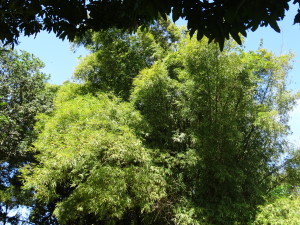PURPOSE: to show the importance of passing on heritage, knowledge to the next generation for them to have a solid foundation on which to build.

Recently I visited the church I attended as a boy growing up in Barbados. It is a concrete brick church on a hill, on a busy little village street with lush green native foliage and lots of rocks scattered around the church. Behind the church was a huge mango tree arrayed in blossoms, as well as one of the most towering bamboo trees around. The church was painted in a two-tone green color with a variety of palm trees decorating the side of the building. Whenever I visited Barbados, I made the trek to this church to reconnect with the people who were my childhood friends, colleagues, neighbors, and family. But two things usually capture my attention: first, the building itself and what it represents, and secondly, the people, how they have changed, but yet remained the same.
toAs I reflect on the brief history of the church, I remember the original church, which was a few hundred yards down the hill from the current church. It was an all galvanized structure (paling) of corrugated sheets of metal nailed to a simple wood frame. The floor of the church was natural dirt, and we covered the deck with straw to keep our shoes clean (those of us that had shoes), and the straw also prevented our clothes from getting dirty as we knelt to pray. The congregation worked diligently by saving and collecting money from the neighbors and used a variety of other programs to purchase some land to build the current church. We established that church by hand, with picks and shovels to dig into the hard, rocky soil. We mixed concrete in the street with shovels and built the church well. Today, it survives as a stable structure built with much manual labor and love.
And then there is the current congregation. As a boy growing up in this church, some individual families led the church. These were the elders and prominent families in the church. In Barbados, a pastor managed several churches, sometimes ten or more. With that many churches to maintain, the lay people managed the church business. These were and still are today, unpaid positions. What struck me as impressive on this particular trip, the current elders of the church are the children of the previous elders. Some of the grown children were fulfilling the roles of deacons and deaconesses, and the youth leaders and many of the elders are deceased.
The structure survived because we built it well. But more importantly, the church (people) is well attended with bright, spiritually-focused young people eager to learn and follow in the footsteps of their parents. The current elders of the church received a firm foundation from their parents, and now they are cultivating the same sense of spirituality in their children and grandchildren. Our elders built it well, both the structure and the children.
Stan Brooks, PhD

